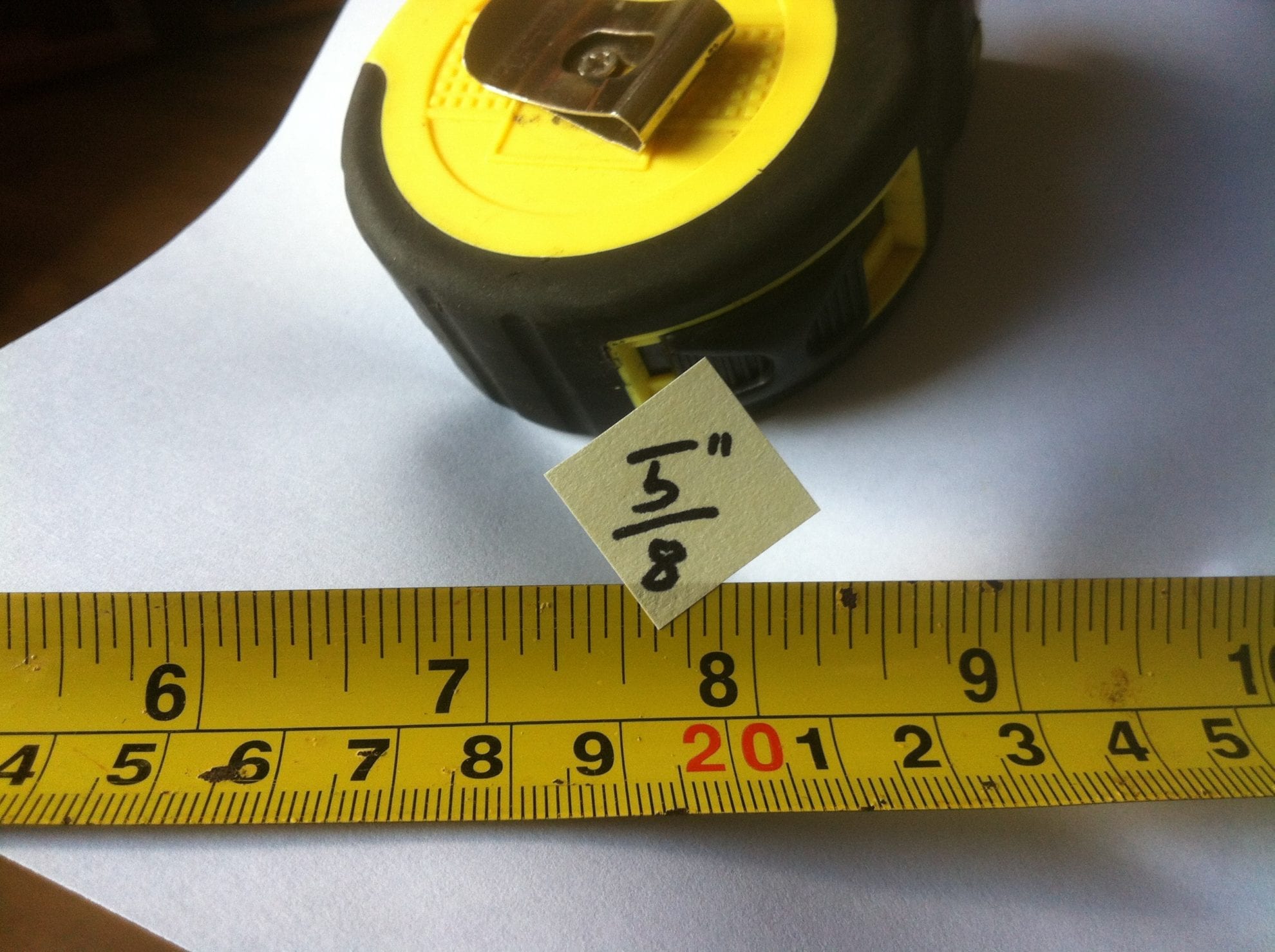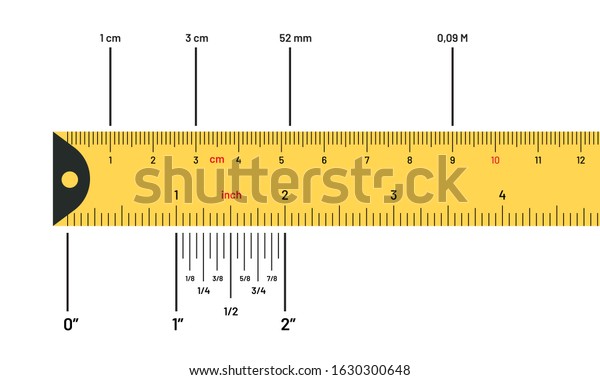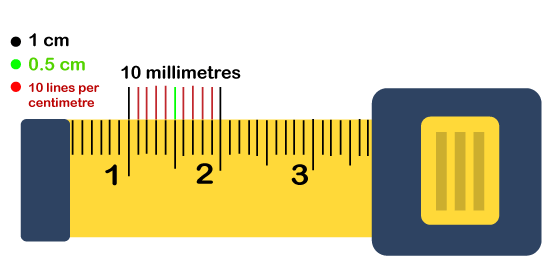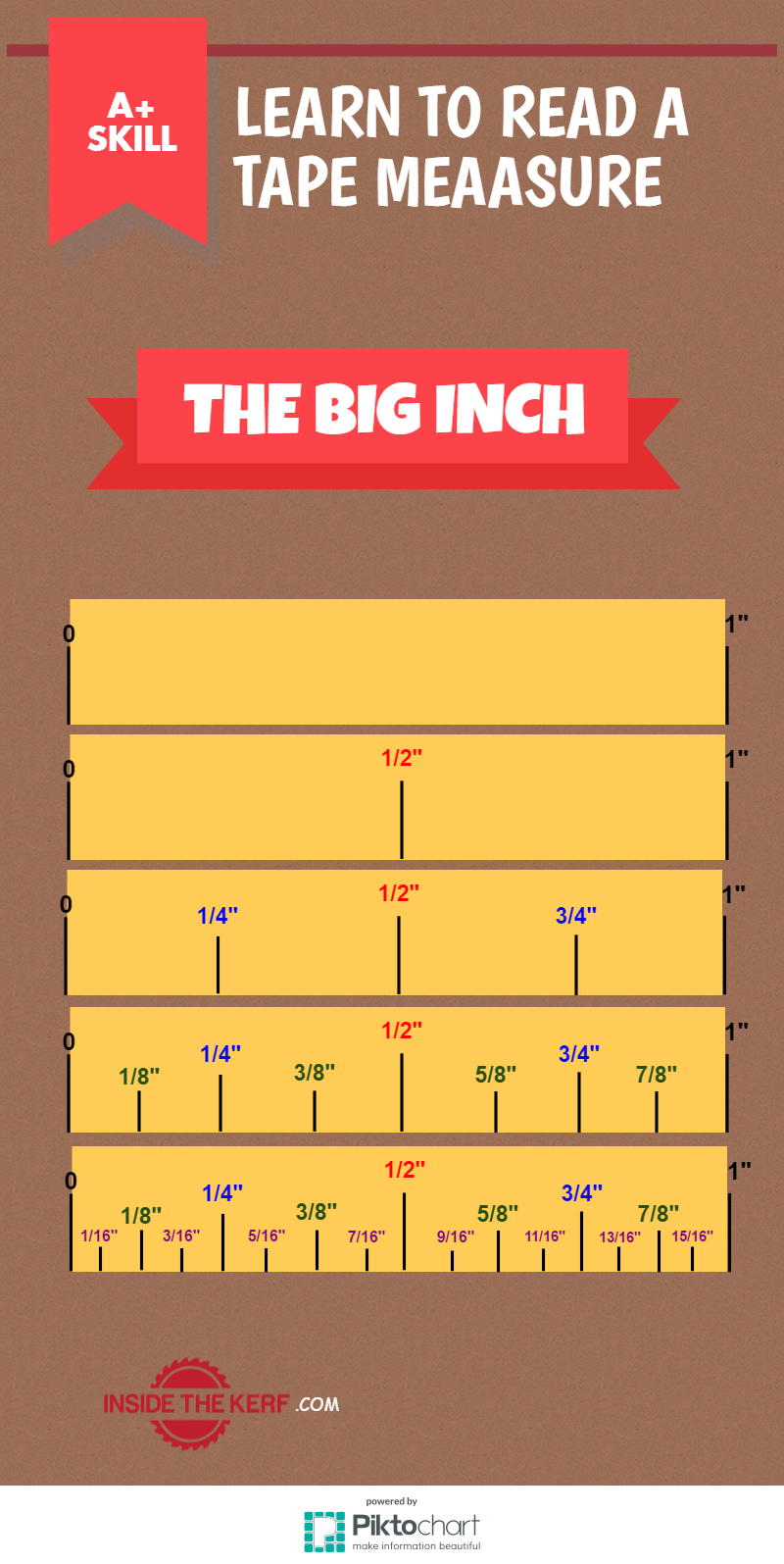Tape measures are often designed for specific uses or trades. Tapes may have different scales, be made of different materials, and be of different lengths depending on the intended use. Tape measures that were intended for use in tailoring or dressmaking were made from flexible cloth or plastic. These types of tape measures were mainly used for the measuring of the subject's waist line.
Today, measuring tapes made for sewing are made of fiberglass, which does not tear or stretch as easily. This type of tape measure will have a floating tang or hook on the end to aid measuring. A tape measure of 25 or even 100 feet can wind into a relatively small container.
The self-marking tape measure allows the user an accurate one hand measure. A tape measure, or measuring tape is a type of hand tool typically used to measure distance or size. It is like a much longer flexible ruler consisting of a case, thumb lock, blade/tape, hook, and sometimes a belt clip. A tape measure will have imperial readings, metric readings or both. They are a common measuring tool used in both professional trades and simply around the home.
Firstly, let's cover the most common markings found on a foot tape measure. Generally speaking, people use building and/or carpentry tape measures. These are just your average, run-of-the-mill measurement variety. On these tapes, you will see several black lines running perpendicular to the edge of the tape in-between each of the feet and inch markings. These black lines are of different lengths, helping the user differentiate between the various measuring units provided on the tape.
Tape measure tests usually consist of questions aimed to determine your level of experience with a tape measure, and the knowledge you have around measuring tools in general. You may be asked questions such as, "How many marks can be found in the spacing between each 1-inch mark on a measuring tape? " or, you may be given a series of tape measure images and asked what each line on the tape represents . A handful of tests may also inquire regarding the more specific markings on a measuring tape, such as the black diamond mark. Beyond the most important part that we've covered above with regard to measurements, there are other features to familiarize yourself with on the typical tape measure. In the US, the standard tape measure will measure in Imperial units—that's feet and inches—while the rest of the world uses metric tape measures to measure in meters and centimeters.
No matter which measurement system your measuring tape follows, the basic anatomy of the tool and how to read it remain the same. Reading a tape measure correctly is a necessary skill when taking on DIY projects. Tape measures are available in both standard or imperial units and in metric units.
Plus, you'll learn some tips and tricks for using this tool to get precise measurements. The sale of dual Metric/US Customary scale measuring tapes is slowly becoming common in the United States. For example, in some Walmarts there are Hyper Tough brand tapes available in both US customary units and Metric units. So, the inclusion of a metric scale requires the measuring device either to contain 3 scales of measurement or the elimination of one of the US Customary scales. The first of the small black diamonds you'll find on a measuring tape is at the 19.2" mark.
The next of the diamond shapes is found at 38.4", then the 57.6", 76.8", and 96" (or, the 8 feet point - also known as the "8-foot rule"). These black diamonds represent the center point of the studs along a wall , and these markings enable 5 studs per 8 feet, all evenly spaced - common for a wall in your home. So instead of getting out a stud finder to locate each stud, simply use the small black diamonds on your tape measure.
Some tape measures also use red markings for every 16 inches along a tape measure. This is done because 16" is also a common distance for studs or joists, and a 16" allows for a 6th stud per 8 feet, again all evenly spaced.. Just as you would with a retractable tape measure, look for the spot where the end of the object or distance you're measuring lines up with the tape measure.
If the tape measure stretches exactly halfway between the 27 and 28 inch markings, this means that your arm is 27.5 inches long. You will get two nice tape measures in this package from LEXIVON. The case of the tape measure is made of hard ABS plastic with a rubber boot for protection against impact and firm grip. The tape of this tool is wide, 1 inch, and both metric and imperial units are available with easy-to-read fractional markings. It is coated with nylon for protection against wear and tear.
The 360° end tab utilizes multiple rivet joints to this 25' measure tape and the true zero multi-catch hooks provides an accurate read for both internal and external measurements. The dual scale measuring tape CMHT37226S from CRAFTSMAN includes both metric and imperial units. The measure tape high contrast markings are easy to read. The end hook is attached to the tape using three rivet joints. Once the tape is extracted from the case for measurement, it will remain locked to that position, thanks to the self locking mechanisms. Most standard tape measures in the U.S. have markings that measure down to 1/16 of an inch.
These are smaller, sometimes thinner markings, evenly spaced between the half-inch and inch marks on a tape measure. On some tapes, quarter inch marks are the same size as eighth-inch marks. Remember that two sixteenths of an inch equals one eighth, two eighths of an inch equals one quarter, and 2 quarters equals one half. For example, the second eighth-inch marking after the inch marking is a quarter inch.
The use of millimeter only tape measures for housing construction is a part of the US metric building code. Millimeters produce whole numbers, reduce arithmetic errors, thus decreasing wastage due to such errors. A standard tape measure will have all the same markings as an easy read measuring tape, but will only have labels for the large 1″ marks.
This is typically why people new to reading measuring tapes find it hard to know what measurement they're actually looking at. An easy read tape measure has the most dimension details on the tape, making the reading of your measurement easier to recognize and quite possibly quicker. Reading a tape measure is a skill you can easily master. Using this small, sturdy hand tool can improve the accuracy of your project measurements. Learning how to use a tape measure properly means to always "measure twice, cut once." You can use a standard tape measure or opt for a metric one. The Home Depot delivers online orders when and where you need them.
The mylar polyester film on the Stanely FATMAX's tape shrugged off the sanding I used to simulate wear, leaving barely visible scratches on its measures. In addition to this protective film on the tape, the FATMAX has an additional clear plastic layer on the first three inches of tape, providing it with additional protection. Compared to other tape measures that had the paint completely worn off the aluminum blade of their tapes, the lack of damage to the FATMAX was really impressive. The lines printed on this tape measure's blade are large, easy to read, and include extra markings for studs for construction users. A professional tape measure for tradesmen, surveyors, architects, construction engineers and builders.
The rigid 10m tape with metric and imperial graduations is helpful for accurately measuring small job sites, homes, installations, carpentry and metalwork. Attach the hook to the point or edge you wish to measure from and pull to use one-handed. The blade lock keeps your measurement accurate while you move and compare lengths. Release the lock when done, and the automatic return mechanism will retract the tape blade quickly.
Comes in bright yellow for visibility and has a belt clip and wrist strap lanyard to secure it on your person. A whole inch is divided into further sixteen small fractions for more accuracy. So, the smallest measuring unit of common measuring tape with imperial units is 1/16 inch . The next bigger mark denotes 1/8 inch and there are a total of 18 marks for that.
The 1/4 inch marks are bigger than the 1/8 inch marks. In the middle point of two inch markings, the 1/2 inch marking is placed and it is shorter than the inch marks. Starrett long and short measuring tapes and Measure Stix™ are offered in a wide range of styles and sizes. Graduations are available in English and Metric to meet virtually every requirement for accurate tape measurement. Introducing the new series of Starrett, Starrett Exact® and Starrett Exact® Plus.
Flexible, vinyl measuring tapes are typically used for sewing and fabric, but I've used them for measuring round objects in our DIY or home improvement projects before as well. Like the standard tape measures, these only label the 1″ marks along the tape and require you to understand how to read a tape measure. We've owned and used this standard tape measure for years and have been very happy with it. Once you learn what the markings mean (see our next section!) this type of measuring tape will be easy to read too.
The nice thing about them is the 1″ marks are much larger and easier to read than the easy read tape measure option discussed above. Not to be too partial, but since you're still here… we thought you might appreciate a recommendation. The Stanley brand is one that's earned its stripes over the years, and in particular the Stanley Fatmax is a model well known by those who know a good tape measure.
The Fatmax tape measure has the above features, but also the durability and ruggedness you want in a tool that's needed to be reliable and available on a moment's notice. Whether you are preparing for a tape measure test for employment qualifications, or just want to know how you can better understand how to read a tape measure, we are here to help. This article will cover everything you need to know in order to grasp the art of reading inches & feet , as well as centimeters, millimeters & meters . In addition to the numerical units, we'll cover the meaning of the small diamond shapes and what the red numbers mean when measuring with your tape blade. To read a measuring tape, line the zero mark up at the edge of the item you're measuring, then stretch the tape all the way across the item. Try to keep the tape straight to ensure an accurate measurement!
Then, look at the point where the tape meets the end of the item you're measuring and read the nearest large number. The large numbers are the units you're measuring, like inches or centimeters, and the markings between the large numbers correspond to fractions of that unit. In metric measuring tapes, centimeters are the most significant markings. Centimeters are generally represented by the large lines , and you will see a number next to each line.
This Spec Ops 16' Tape Measure boasts military grade composite housing and MIL-X coating on the tape which makes it two times more durable than ordinary tapes. The tape itself is 16' long but the case is 20% more compact than standard tape measures. The 10' standout of the tape is convenient when you are working alone. The 1-¼" tape also provides the highest visibility and contrast with a bright, white blade for precise measurement reading and marking in dark spaces. Fractional markings are clearly printed on both sides of the wide tape so that you can take accurate measurements without error.
In general, a tape measure or measuring tape refers to a flexible ruler used to measure size or distance. The tape is marked with linear measurement markings at regular intervals. The materials used to make measuring tapes are ribbons of cloth, plastic, fiberglass, or metal strips.
The idea of taking and keeping measurements predates ancient civilizations like Egyptians and Romans. The first historical record of reading measure tape was by the Romans using marked strips of leather. Taking accurate physical measurements is crucial for any projects like surveying, construction, garments, mechanical projects, etc. The modern measurement system was devised by an English bishop, John Wilkins in 1668, and the spring return pocket tape measure was invented by William H. Bangs in 1864.
With the advancement of cutting edge technologies, the measure tape read has already entered into the digital age with digital measure tape. You will see a foot designation marked every 12 inches . In the United States, the imperial measurement system is normally used on a tape measure, though some models may have both the imperial and the metric system. This same pattern is true for the next two smaller black line markings on the tape measure within the quarter inch. Going one size of the black line down from the quarter-inch marking, you'll find the "one-eighth marking".
The last, and smallest of the black lines (on each side of the 1/8th inch marking, is the "one-sixteenth marking". Reading a ruler works the same way as tape measure reading. On a tape measure labeled with imperial units, the most prominent marks are usually the one-inch marks. These are typically marked by long, thin lines and fairly large numbers.
Sixteenth-inch marks are considered as the shortest lines of all measuring tapes. You will find 16 tiny marks per inches and 4 in each quarter inch. For imperial or foot-inch units, the tape has a series of large numbers marked 1, 2, 3, 4, etc. with the long vertical marks before them. So, you can keep track of your measurement conveniently. Usually, after 12 inches, there will often be a foot marking which is a different color than the other markings.
It consists of a ribbon of cloth, plastic, fibre glass, or metal strip with linear measurement markings. Its design allows for a measure of great length to be easily carried in pocket or toolkit and permits one to measure around curves or corners. Today it is ubiquitous, even appearing in miniature form as a keychain fob, or novelty item.
In addition to the easy read and standard tape measures discussed above, there are a few other non-traditional measuring tapes you can use for projects too. Metric measurements on a measuring tape are displayed in Millimeters, Centimeters and Meters whereas Imperial measurements are in Feet, Inches and fractions of Inches. Metric readings are most commonly used in the UK, however this is purely down to personal preference. Imperial measurements are usually found in red on the top of the blade, whilst metric measurements are in black on the bottom. On most metric measuring tapes, centimetres are the most prominent markings.



























No comments:
Post a Comment
Note: Only a member of this blog may post a comment.